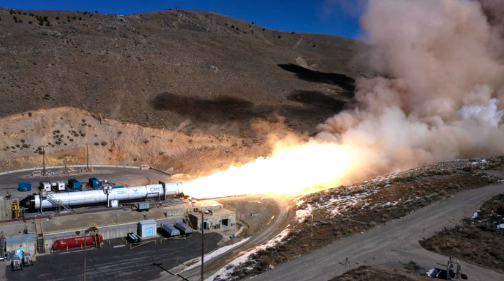
Northrop Grumman Corporation (NYSE: NOC) has successfully conducted a full-scale static fire test of the second stage of the company's OmegA rocket today in Promontory, Utah.
Developed to support the U.S. Space Force’s National Security Space Launch program, the OmegA Launch System remains on track for its first certification flight in spring 2021.

During this test, the second stage motor fired for full-duration, approximately 140 seconds, burning nearly 340,000 pounds of solid propellant to produce upwards of 785,000 pounds of thrust. The test verified the motor’s ballistics and thermal performance as well as steering control and performance in a cold-conditioned environment. The test team collected more than 500 channels of data to aid in verifying the motor.
In October 2018, the U.S. Air Force awarded Northrop Grumman a $792 million Launch Services Agreement to complete detailed design and verification of the OmegA space launch vehicle and launch sites. This cold test, in conjunction with the successful hot static fire in May 2019, subjected OmegA’s motors to the most extreme propellant temperatures the rocket will experience during storage, transport, stacking and launch.
Northrop Grumman has leveraged its flight proven technologies and extensive experience launching critical payloads in the development of the OmegA launch system. The rocket was designed to accommodate national security payloads while also serving the civil and commercial markets.
In preparation for OmegA’s inaugural flight, Northrop Grumman now occupies High Bay 2 as the first commercial tenant in NASA’s historic Vehicle Assembly Building at Kennedy Space Center. Construction crews are currently modifying Mobile Launch Platform-3 to serve as OmegA’s assembly and launch platform at Pad 39B.
Charlie Precourt, VP, Propulsion Systems, Northrop Grumman, said the company designed OmegA to use the most reliable propulsion available to ensure exceptional mission assurance for customers. This firing is a significant accomplishment that demonstrates a domestic solution for the RD-180 rocket engine replacement.

